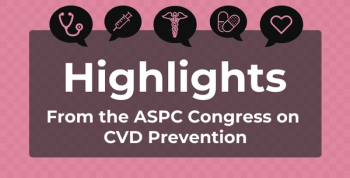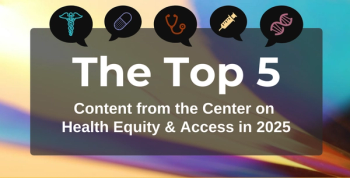
5 Takeaways From the ACO Coalition Fall 2016 Live Meeting
At the fall live meeting of the ACO & Emerging Healthcare Delivery Coalition in Philadelphia, Pennsylvania, attendees heard presentations and participated in workshops that discussed care management, value-driven payment systems, and the future of healthcare.
At the fall live meeting of the ACO & Emerging Healthcare Delivery Coalition™ in Philadelphia, Pennsylvania, attendees heard presentations and participated in workshops that discussed care management, value-driven payment systems, and the future of healthcare. The spring live meeting of the ACO Coalition will be held May 4-5, 2017, in Scottsdale, Arizona.
Here are 5 takeaways from the 2-day fall meeting, which was held on October 20-21, 2016. For full coverage,
1. MACRA was on everyone’s mind
Unsurprisingly, Coalition attendees were buzzing in reaction to the highly anticipated Medicare Access and Chip Reauthorization Act (MACRA) final rule that had been released less than a week before.
James M. Daniel, Jr, JD, MBA,
The
MACRA resurfaced in several interviews with AJMC as well. Kate Goodrich, MD, director of the Quality Measurement and Value-Based Incentives Group in CMS,
2. Hotspotting could help reach complex patients
Three speakers from the Camden Coalition of Healthcare Providers brought their expertise across the river to Philadelphia, where they explained how their ACO uses hotspotting to target the most complex and costly patients.
The Care Management Initiative (CMI) was
“We're not just going to laser in on one disease state, we're taking everything that's making up this person into account,” Murray
Natasha Dravid, MBA, associate director for business planning and continuous improvement at the Camden Coalition, then took the stage
3. ACO characteristics may be correlated with quality in some surprising ways
ACOs of all shapes and sizes were represented at the Coalition, highlighting the diversity of this care model. Mariétou Ouayogodé, PhD, a post-doctoral research fellow at the Geisel School of Medicine at Dartmouth, kicked off the coalition with the first session, “Associations of Organizational Characteristics with Performance: Disease Prevention Measures.”
She presented her data on how ACO qualities (like size, composition, organizational structure, beneficiary characteristics, and more) are related to their success, based on a sample of 215 Medicare Shared Savings Program (MSSP) and Pioneer ACOs.
Financially, no single factor predicted the amount of savings, but Ouayogodé did find that ACOs with prior risk-bearing contracts were more likely to receive bonus payments. She attributed this correlation to the knowledge and strategies ACOs can acquire in a risk-based environment. Additionally, although many ACOs with different compositional types were equally likely to achieve savings, those with large baseline financial benchmarks had more opportunities to succeed.
Ouayogodé’s research also explored the impact of ACO characteristics on the quality of preventive care. She found that high performers had fewer specialists, were more likely an MSSP or an alternative payment model (APM), and had a higher ratio of beneficiaries to full-time primary care providers. The only factors that had negative associations with care quality were a high number of specialist providers and a high quantity of minority beneficiaries.
4. Patient engagement must be higher up on the priority list
Patients will become more and more engaged in their healthcare, and providers must welcome and encourage this development, according to Eleanor M. Perfetto, PhD, MS, senior vice president of Strategic Initiatives at the National Health Council. She said that in a patient-centered system, the patients’ views are given credibility, so providers must “start to set up mechanisms to listen to the voice of the patients you care for.”
A. Mark Fendrick, MD, director of the University of Michigan’s Center for Value-Based Insurance Design and co-editor-in-chief of AJMC, agreed that patients will take a more active role in their healthcare, and thought that rethinking benefit designs could make this transition smoother. He said that the incentives for providers need to be aligned with those of their patients. In the current system, he estimated that 80% of providers are not aligned with their patients, 19% don’t know what the patients want, and only 1% say, “let’s make it easy, not hard, for the patients” to be more engaged.
The Camden Coalition of Healthcare Providers served as an excellent example of how to meaningfully engage patients. When the CMI team visits a patient for the first time, they begin the process of care planning, where they ask what the patient wants to work on instead of focusing on a medical diagnosis. Often, the patients mention worries like housing insecurity, legal troubles, or lack of social support. The team helps to resolve these concerns because the patients cannot become fully engaged in their healthcare if they are preoccupied by more pressing struggles.
5. Keep a cautious eye on the future, stakeholders say
The “Healthcare 2020” panel concluded the meeting by bringing together experts from various components of the healthcare system and asking them to imagine how it might change in the coming years.
Perfetto and Fendrick joined Michael E. Chernew, PhD, director of the Healthcare Markets and Regulation Lab at Harvard Medical School and co-editor-in-chief if AJMC, to
The contentious political environment was cited as a huge barrier to the ACA’s success. Chernew said that despite political resistance to “Obamacare” in conservative states, the economics “unquestionably favor” Medicaid expansion.
Chernew and Fendrick also worried about the future of the ACO model, agreeing that although ACOs have seen some promising results in savings, the healthcare system might move on to a new system and leave ACOs in the dust.
“We’re impatient,” Chernew said. “Before we make things work, we move to a new thing.”
Newsletter
Stay ahead of policy, cost, and value—subscribe to AJMC for expert insights at the intersection of clinical care and health economics.








































